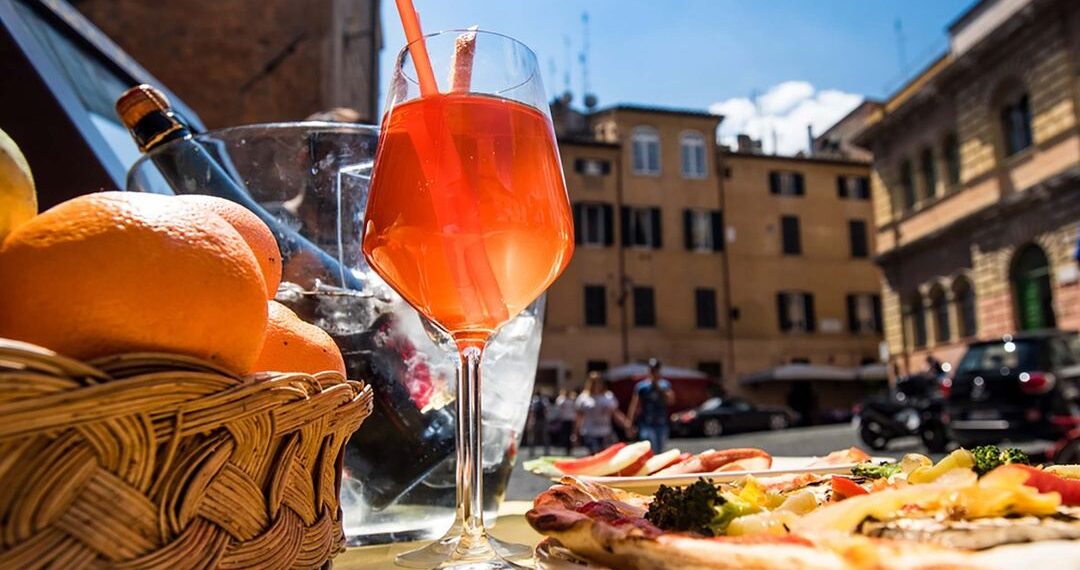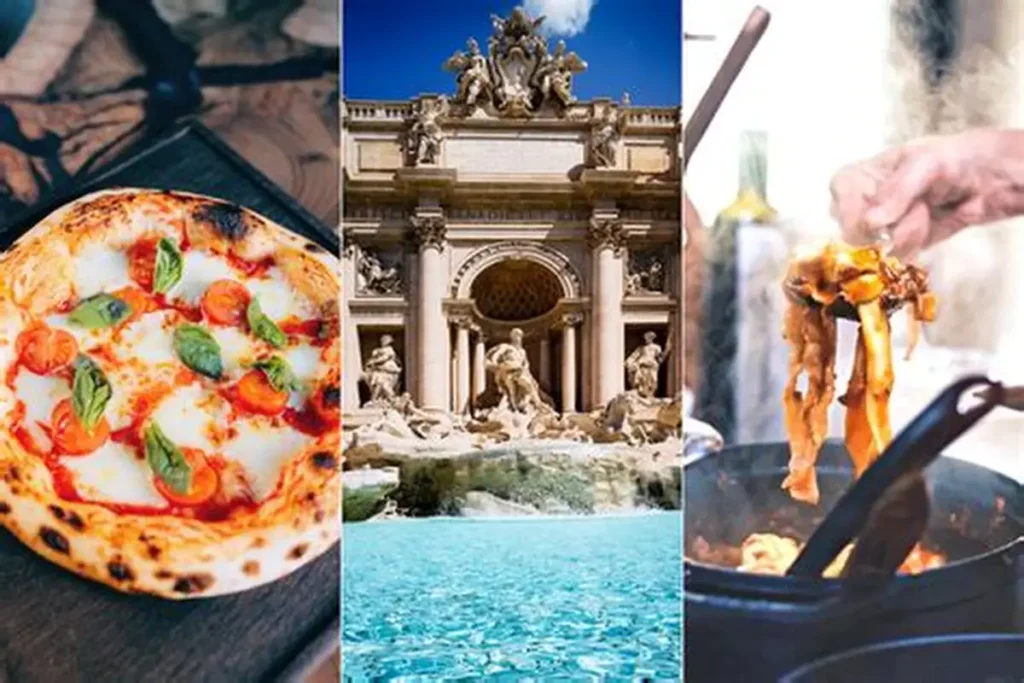Italy is not just a destination; it’s a feast for the senses. From its breathtaking landscapes to its rich culture and timeless art, there’s something magical about every corner of this Mediterranean gem. But what truly sets Italy apart is its food a culinary heritage that reflects the soul of each region. When you travel to Italy you’re not just sightseeing; you’re embarking on a delicious journey across diverse traditions, ingredients, and flavors that tell stories of passion, family, and history.
The Magic of Italian Cuisine
Italian cuisine is deeply rooted in local culture and geography. Every region boasts its own specialties shaped by the land and sea around it. From creamy risottos in the north to hearty pasta dishes in the south, Italy’s culinary map is as diverse as its landscapes.
What makes Italian food so irresistible is its simplicity fresh, high-quality ingredients prepared with love and care. The use of olive oil, fresh herbs, tomatoes, and cheese ties the cuisine together, but each region adds its own twist.
As you Visit Italy every city invites you to taste a different version of what it means to be Italian.
Northern Italy: Rich Flavors and Alpine Comforts
The northern regions, including Lombardy, Piedmont, and Veneto, offer a cuisine influenced by the cooler climate and proximity to the Alps. Butter, cheese, and rice take center stage here, rather than olive oil and pasta.
- Lombardy is famous for creamy Risotto alla Milanese, infused with saffron, and the decadent Osso Buco, slow-cooked veal shanks served with rich sauce.
- In Piedmont, you’ll find truffles, Barolo wine, and the beloved Bagna Cauda, a warm anchovy-garlic dip perfect for vegetables.
- Veneto, home to Venice, offers Sarde in Saor (sweet and sour sardines) and Cicchetti, small tapas-style bites enjoyed with a glass of prosecco.
The north’s flavors are luxurious and comforting — perfect for cozy evenings and wine lovers.
Central Italy: The Heart of Traditional Flavors
Central Italy — home to Tuscany, Umbria, and Lazio is the country’s culinary heart. This region celebrates the simplicity of rural cooking, where every ingredient tells a story.
- Tuscany is known for its rustic dishes like Bistecca alla Fiorentina, a thick, juicy T-bone steak grilled over open flames. Pair it with a glass of Chianti wine, and you’ve got a perfect Tuscan evening.
- Umbria, the land of rolling hills and medieval towns, offers wild boar ragù, porcini mushrooms, and the prized black truffle.
- In Lazio, where Rome reigns supreme, pasta lovers are in for a treat. Dishes like Carbonara, Amatriciana, and Cacio e Pepe define the Roman table — simple yet incredibly satisfying.
If you’re taking the Rail travel from Rome to Naples , consider stopping to savor Roman street food before continuing south from Supplì (fried rice balls) to Porchetta (roasted pork sandwich).
Southern Italy: Passion on the Plate
The south bursts with color, sun, and bold flavors. The Mediterranean climate blesses the region with fresh produce, olive oil, citrus, and seafood.
- Campania, home to Naples, is the birthplace of pizza. The iconic Margherita pizza, made with fresh mozzarella, basil, and tomatoes, is pure perfection. The Neapolitans’ passion for food can be felt in every bite.
- Puglia, known for its “heel of the boot” coastline, serves up Orecchiette pasta with broccoli rabe and fresh burrata cheese, a creamy delight.
- Sicily, the island at the southern tip, offers a fusion of Italian and Arabic influences. Dishes like Arancini (stuffed rice balls), Caponata (eggplant salad), and Cannoli desserts are local favorites.
When you A trip to Italy heading south means embracing vibrant flavors, seafood delicacies, and sunshine in every dish.
From Roma to Napoli: A Scenic and Delicious Train Journey
One of the most enjoyable ways to experience Italian food and culture is by train. The Roma to Napoli train offers a comfortable and scenic ride connecting two culinary capitals Rome and Naples.
This high-speed journey takes just about 1 hour and 10 minutes, whisking you from the Eternal City’s ancient wonders to Naples’ bustling streets and seaside views. Along the way, you can watch the Italian countryside pass by vineyards, olive groves, and small towns where food traditions have been passed down for generations.
In Rome, start your morning with a cappuccino and a freshly baked cornetto. Then, hop on the Rome to Naples rail connection and prepare your appetite for authentic Neapolitan pizza once you arrive. In Naples, don’t forget to try Sfogliatella, a crisp, shell-shaped pastry filled with sweet ricotta the perfect ending to a perfect day.
Traveling by train also allows you to explore more regional cuisines easily, from Lazio’s pasta dishes to Campania’s seafood. It’s an eco-friendly, comfortable, and affordable way to taste Italy from north to south.
Italian Desserts: A Sweet Ending
No culinary journey through Italy is complete without dessert. Each region has its own specialties:
- Tuscany brings you Cantucci, almond cookies dipped in sweet Vin Santo wine.
- Naples serves the legendary Sfogliatella and Pastiera Napoletana, a ricotta-filled Easter cake.
- Sicily delights with Cannoli and Granita, a refreshing crushed-ice dessert perfect for summer days.
These sweet treats are the perfect finale to any meal, symbolizing the joy and warmth that define Italian hospitality.
Travel Tips for Food Lovers Visiting Italy
- Eat Local: Avoid tourist spots. Look for family-run trattorias where locals dine.
- Timing Matters: Lunch (pranzo) is usually between 12:30 and 2:30 PM; dinner (cena) starts after 7:30 PM.
- Embrace Slow Food: Italians love to eat slowly — savor each bite and enjoy the experience.
- Try Regional Wines: Each area offers local wines that pair beautifully with the cuisine.
- Take Cooking Classes: Learn how to make pasta, pizza, or gelato from local chefs to bring a piece of Italy home.
Conclusion
A culinary journey through Italy’s regions is more than a trip it’s a celebration of taste, tradition, and togetherness. Every region tells its own story through food, from creamy risottos in the north to sun-kissed pizzas in the south. Whether you’re enjoying a rustic Tuscan meal or a seaside feast in Sicily, Italian cuisine captures the heart like no other.
So, pack your bags, Traveling across Italy, and take the Traveling by train from Rome to Naples for a taste of the country’s finest flavors. From north to south, every dish is a masterpiece and every bite, a memory you’ll cherish forever.
Frequently Asked Questions (FAQ)
1. What is the best time to Italy travel experience for a food-focused trip?
The best time to Italy tour for food lovers is during spring (April to June) and autumn (September to October). These seasons offer pleasant weather, fewer crowds, and fresh seasonal produce. You can also experience local food festivals celebrating wine, truffles, and regional specialties.
2. What are the must-try dishes when visiting Italy?
Every region in Italy has its own iconic dishes. Some must-try options include:
- Pizza Margherita in Naples
- Pasta Carbonara in Rome
- Risotto alla Milanese in Lombardy
- Bistecca alla Fiorentina in Tuscany
- Cannoli in Sicily
No matter where you go, you’ll find delicious local variations worth tasting.
3. How long is the train journey from Roma to Napoli?
The is one of Italy’s most popular high-speed routes. The journey takes about 1 hour and 10 minutes, making it a quick and scenic way to travel between the two cities. Trains are frequent, comfortable, and perfect for exploring both Rome’s classic cuisine and Naples’ famous pizza in a single trip.
4. Is it easy to travel around Italy by train?
Yes, Italy’s railway network is excellent and connects most major cities and regions efficiently. High-speed trains like Frecciarossa and Italo offer comfortable and fast travel options. You can easily plan routes such as High-speed rail from Rome to Naples , Milan to Florence, or Venice to Rome to explore different culinary destinations.
5. What food experiences should I not miss in Italy?
Some unforgettable food experiences include:
- Taking a pizza-making class in Naples
- Visiting a vineyard in Tuscany for wine tasting
- Trying fresh truffles in Umbria
- Enjoying gelato in Florence
- Sampling seafood pasta on the Amalfi Coast
Each experience immerses you in Italy’s authentic food culture.
6. Is Italian food the same everywhere in the country?
No, Italian cuisine varies greatly by region. The north uses more butter, cheese, and rice, while the south features olive oil, tomatoes, and seafood. This diversity is what makes a culinary journey through Italy’s regions so exciting you’ll taste completely different flavors as you travel from north to south.
7. What is the best way to find authentic Italian restaurants?
To find authentic restaurants, avoid overly touristy areas and look for places filled with locals. Check for small trattorias or osterias that serve regional dishes. Ask locals for recommendations Italians love sharing their favorite food spots!
8. Do I need to book restaurants in advance in Italy?
For popular restaurants, especially in big cities like Rome, Florence, and Naples, it’s best to make a reservation. However, many smaller trattorias and family-run eateries welcome walk-in guests, particularly during lunch hours.
9. What are traditional Italian desserts I should try?
Italy’s dessert list is long and delightful. Don’t miss:
- Tiramisu (Veneto)
- Cannoli and Granita (Sicily)
- Sfogliatella (Naples)
- Panna Cotta (Piedmont)
- Cantucci with Vin Santo (Tuscany)
Each dessert reflects the sweetness and creativity of Italian cooking.
10. Is it easy to combine food travel with sightseeing in Italy?
Absolutely! Italy’s charm lies in how food and culture intertwine. Whether you’re exploring Rome’s ancient ruins, Florence’s art galleries, or Naples’ coastal views, you’ll find delicious local dishes at every stop. Traveling by train, especially routes like Italy’s Rome Naples train service , makes it easy to enjoy both sightseeing and authentic cuisine.











